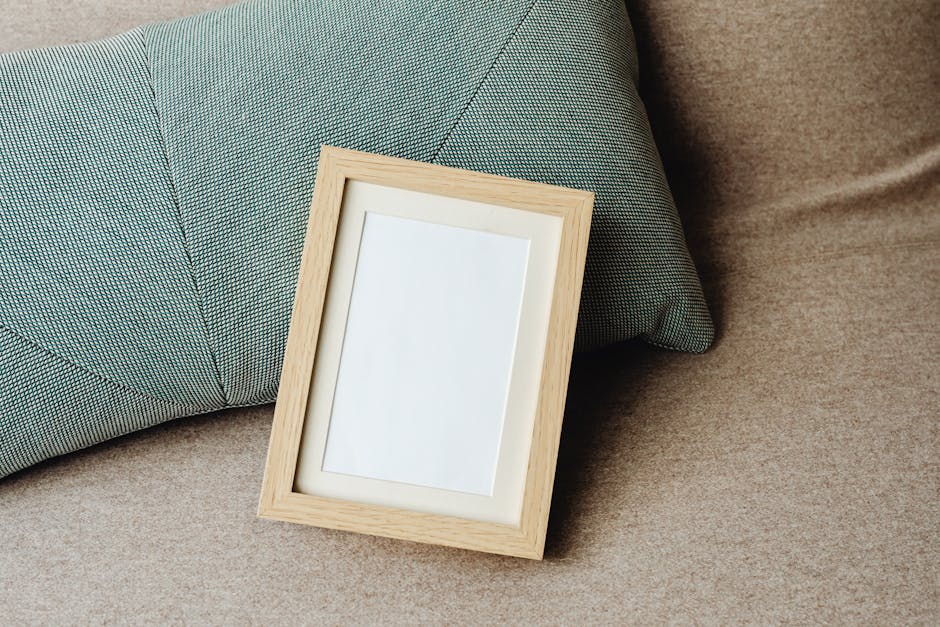The Art of Empty Space: How Negative Space Enhances Minimal and Modern Interiors
Introduction
In the realm of interior design, where maximalism and ornamentation often take center stage, the power of emptiness can be surprisingly profound. Negative space, also known as empty space or whitespace, is the area around and between objects in a design. It’s not just a void; it’s an active element that shapes perception, enhances focus, and elevates the overall aesthetic of minimal and modern interiors. This article delves into the art of empty space and how strategically incorporating it can transform your living spaces into havens of tranquility and style.
The Power of Negative Space in Interior Design
What is Negative Space?
Negative space isn’t simply the absence of objects. It’s the deliberate and intentional use of unoccupied areas to define, highlight, and balance the occupied areas. Think of it as the canvas upon which your furniture, artwork, and accessories are arranged. It’s just as crucial as the elements you choose to include.
Benefits of Incorporating Empty Space
- Enhanced Focus: Negative space draws the eye to key elements, preventing visual clutter and creating a sense of calm. It allows individual pieces to stand out and be appreciated.
- Improved Aesthetics: Strategically placed empty space creates visual breathing room, making a space feel more airy, open, and sophisticated.
- Balance and Harmony: It balances the occupied areas, preventing a space from feeling overcrowded or chaotic. This creates a harmonious and visually pleasing environment.
- Emphasis on Functionality: Embracing empty space can encourage a more mindful and practical approach to interior design, focusing on essential elements and their purpose.
- Sense of Luxury: In many cultures, emptiness is associated with wealth and sophistication. Creating a spacious and uncluttered environment can evoke a feeling of luxury.
Applying Negative Space in Minimal and Modern Interiors
Furniture Placement
Strategic furniture placement is key to maximizing the impact of negative space. Avoid overcrowding a room. Instead:
- Leave ample space around furniture pieces: This allows the eye to travel and appreciate the form and texture of each item.
- Consider the flow of movement: Ensure there’s enough space for comfortable navigation throughout the room.
- Avoid placing furniture against walls: Pulling furniture away from walls can create a more dynamic and visually appealing space.
Wall Decor and Artwork
When it comes to wall decor, less is often more. Here’s how to utilize negative space effectively:
- Choose a few impactful pieces: Instead of filling every wall with art, select a few key pieces that complement the room’s aesthetic.
- Consider the size and scale: Ensure the artwork is appropriately sized for the wall, leaving plenty of empty space around it.
- Create a focal point: Use a single, large piece of art to draw the eye and create a sense of drama.
Color Palette and Materials
The color palette and materials you choose can further enhance the impact of negative space:
- Embrace neutral colors: White, gray, beige, and other neutral tones create a sense of calm and spaciousness.
- Introduce texture sparingly: Use textures to add visual interest without overwhelming the space.
- Opt for clean lines and simple forms: Furniture and accessories with clean lines and simple forms complement the minimalist aesthetic.
Lighting
Lighting plays a crucial role in defining and enhancing negative space:
- Use natural light effectively: Maximize natural light by keeping windows clear and unobstructed.
- Incorporate layered lighting: Combine ambient, task, and accent lighting to create depth and highlight specific areas.
- Consider the shadows: Pay attention to the shadows cast by objects and how they interact with the surrounding space.
Conclusion
Mastering the art of empty space is essential for creating stunning minimal and modern interiors. By understanding its power and applying it strategically, you can transform your living spaces into havens of tranquility, beauty, and style. Remember, negative space is not just a void; it’s an active element that enhances focus, improves aesthetics, and creates a sense of balance and harmony. Embrace the emptiness, and watch your interiors come to life.




Post Comment